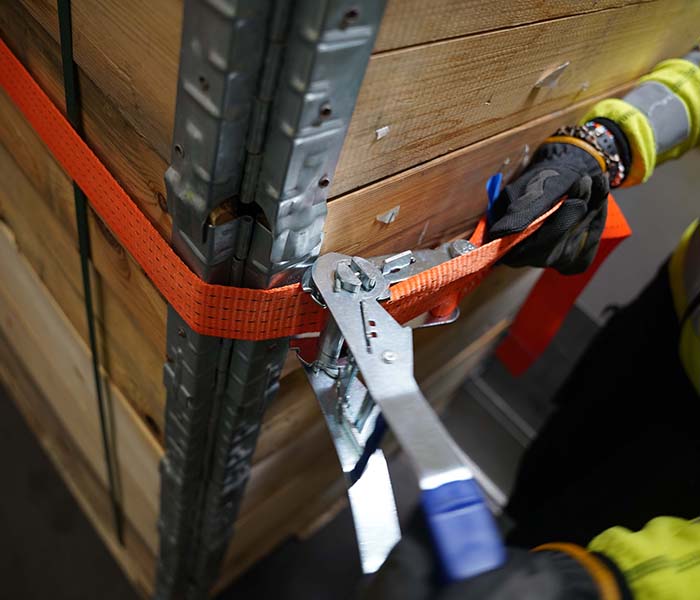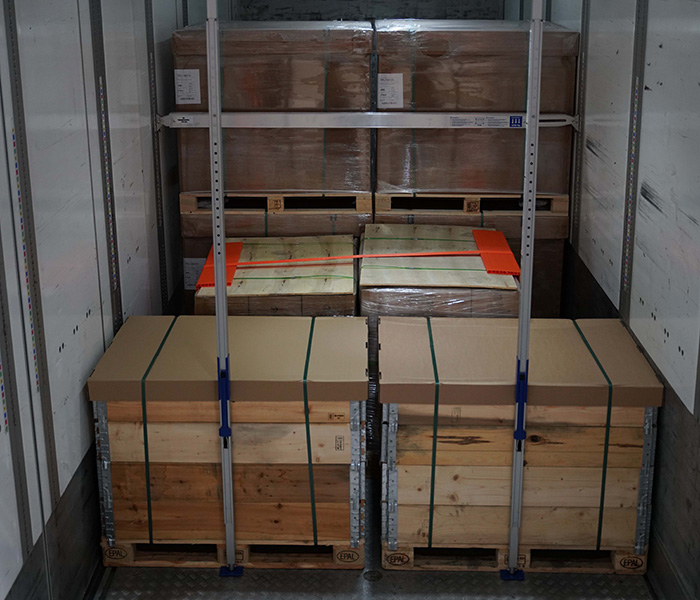Introduction to cargo securing
Cargo securing means ensuring that goods do not shift, slide or tip over during transport. There are many different methods for securing cargo and the choice depends on which cargo carrier is used and/or the type of goods that will be transported.
Why cargo securing?
Every day, goods at great values are transported all over the world, which set high demands on the cargo securing being adapted to both goods and cargo carriers throughout the entire transport chain. Deficiencies in cargo securing can cause serious personal injury and major damage to the goods, and it is therefore of the utmost importance that correct cargo securing is used in each situation. In order to achieve correct cargo securing, it is important to use approved products and to ensure correct handling of the cargo securing equipment.
Factors that affect cargo securing
Type of cargo
• What are you transporting?
• What is the shape, weight and height of the cargo?
• Are the goods packed and what type of packaging do they have?
Type of cargo carrier
• What type of cargo carrier will be used to transport the goods?
• Is the cargo carrier correctly sized for the goods?
• What cargo securing options are there on the cargo carrier?
Mode of transport
• Will the cargo travel by road, rail, boat, plane or a combination of these?
Available cargo securing equipment
• Is there enough suitable equipment available to secure the goods correctly?
Regulations for cargo securing
Methods for cargo securing
Cargo securing is not only about choosing the right equipment, but also about choosing the right cargo securing method or combination of the methods below.
The most common cargo securing methods are:

Lashing – the goods are lashed securely to the cargo carrier by means of webbing lashings, lashing chains and/or fixed winches.

Blocking – goods are prevented from moving by using cargo bars, beams, dunnage bags or stop blocks, for example.

Locking – goods are mechanically locked to the cargo carrier.
